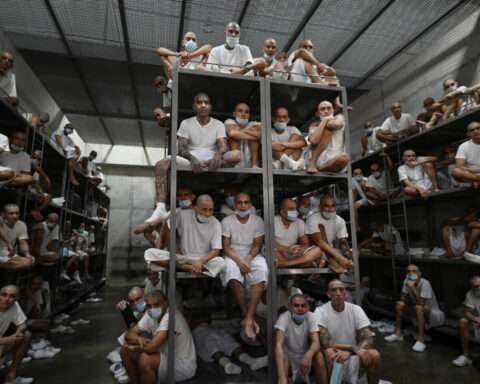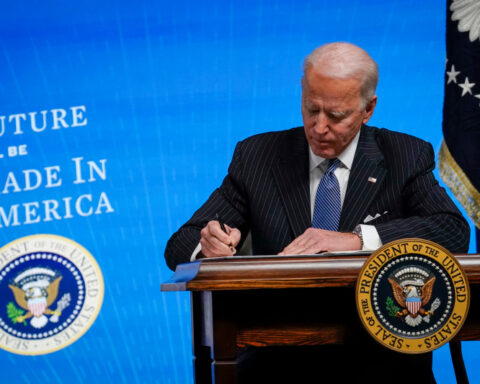Revelations by a large number of former US officials, reported by Yahoo! News, that the CIA planned to abduct and render Julian Assange to the United States — and contemplated murdering him — raise more uncomfortable questions for the Australian government and its policy of trying to pretend Assange doesn’t exist.
The report, relied on interviews with 30 former US officials and said eight of them detailed the plot to assassinate Assange.
The Trump administration went where even the whistleblower-hating Obama administration refused to go and launched a prosecution for espionage and conspiracy, but until now it was widely thought its plans were limited to legal extradition.
It is now clear the CIA — under Republican Mike Pompeo, who would go on to be Trump’s secretary of state — developed plans to abduct Assange and illegally render him to the US via a third country.
Former president Donald Trump declared the report “totally false” and said he never considered assassinating Assange.
The publication claimed that officials picked up what the former Trump administration viewed as highly credible intelligence suggesting the Russians were preparing to sneak Assange out themselves, possibly in a laundry basket, and whisk him to safety in Moscow.
Around this time, Ecuadorian officials were proposing providing Assange with a diplomatic passport that would have enabled him to serve in their mission in Russia.
CIA officials game-planned how they could foil any Russian escape.
One method involved a potential gunfight with Kremlin operatives in the streets of London, another was crashing a car into Assange’s getaway vehicle or shooting the tyres of his plane to prevent it from taking off.
The report said that the British authorities agreed that their authorities would do the shooting.
There was discussion “at the highest levels” of the Trump administration of murdering him. There was also scenario planning about what violent measures US and UK agents might take to thwart a hypothetical Russian attempt to help Assange escape to Russia.
The most obvious question for the Australian government is whether the CIA discussed with Australian intelligence officials its plans to abduct or murder an Australian citizen, or whether Trump administration figures — some of whom were alarmed by the CIA’s planning — alerted the Turnbull government at a political level.
It would say much about how unimportant Australia was, and how little we have spoken up for Assange, if the entire process was conducted without anyone bothering to raise it with the Australian government.
The extent of Australian knowledge of the plans for Assange is likely never to be clarified because Australia’s intelligence agencies are able to operate behind a bipartisan wall of secrecy far stronger than that which applies to US agencies, where independent congressional oversight, a better-protected media, a stronger whistleblower culture and better disclosure laws mean much more scrutiny for intelligence agencies.
In Australia there’s virtually none, with limited parliamentary oversight, brutal gag laws for intelligence officials, vexatious prosecutions and police raids on journalists willing to try to pierce the secrecy.
But there’s another angle that is also important. What sparked the CIA’s fury at WikiLeaks and set it to planning to kidnap or murder Assange was that WikiLeaks in 2017 revealed a trove of CIA software exploits, known as “Vault 7”, which had been stolen from the intelligence agency.
That release was followed, within months, by news that the National Security Agency had had some of its own trove of software exploits stolen, which led to Microsoft publicly criticising intelligence agencies for failing to alert companies to exploitable software faults.
The two cases illustrated how Western intelligence agencies were a key threat to our cybersecurity by intentionally leaving security weaknesses in commonly used systems so they could exploit them — leading to other states, or organised crime, to exploit them as well, in some cases using the very software tools bought or developed by intelligence agencies. A former US intelligence official at that time told Crikey that about 10% of known flaws discovered by Western intelligence agencies were not passed on to the product manufacturers to fix, but instead left in place to be exploited.
It’s generally accepted that since that embarrassment, the likes of the NSA have been more diligent in informing major companies about exploitable flaws. However, the dual missions of intelligence agencies — to safeguard Western interests while accessing information from other countries, including allies — continues to ensure that not all exploitable flaws will be passed on to the people who can fix them.






